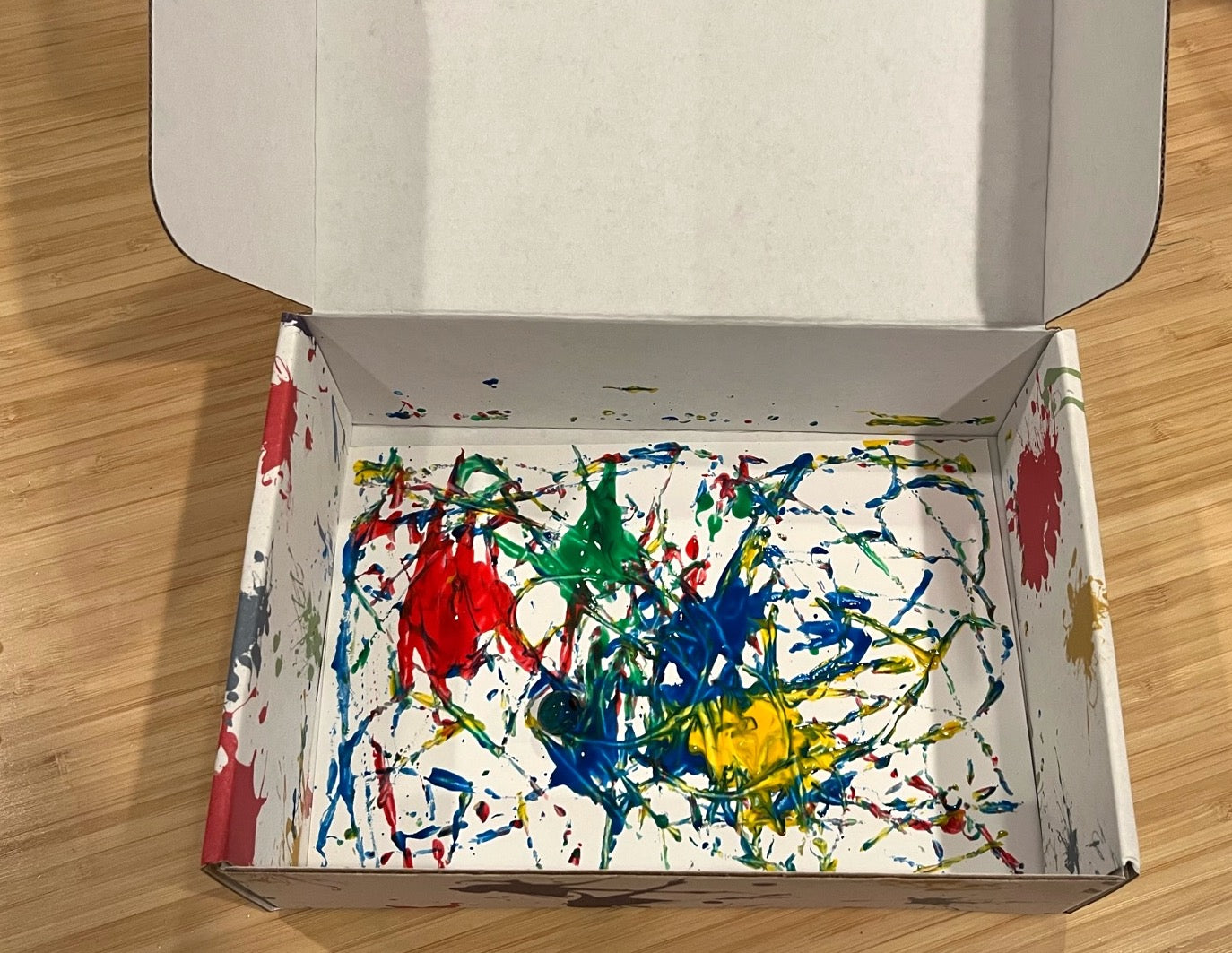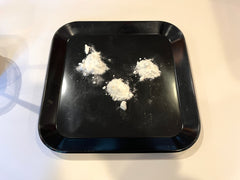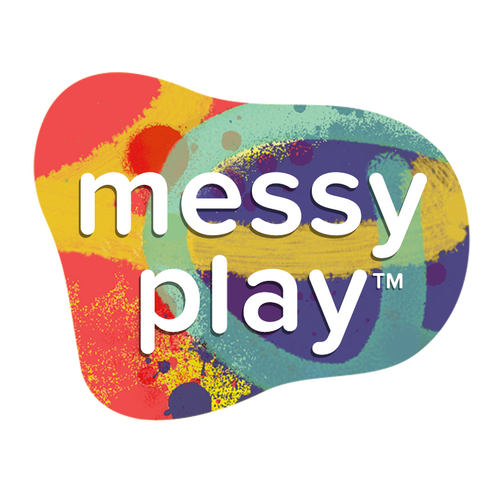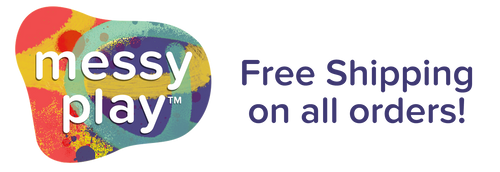

Color Splash Messy Play Kit Guide

Ready to dig into your Color Splash Messy Play Kit? On this page you'll find detailed step-by-step instructions, ideas to extend the learning, and some links to other resources. Feel free to reach out if you have any questions about your kit. Now go get messy!
Jump To:
Color-changing Paint
Kaleidoscope
Hidden Fizzies
Additional Resources
More Messy Play Kits
Color-changing Paint
1. Before you get started, take the 3 bags of color-changing powder outside into the sunlight. Watch them carefully as you step into the sun! See them change from white to other bright colors: bright pink, blue and purple!
2. Open one jar of paint and add one bag of color-changing powder to it. Mix with one stir stick (popsicle stick). Repeat with the other 2 jars of paint and bags of powder.


3. Use the paintbrush to paint on a piece of art paper (you have 6 pieces of paper for this project).
4. Try this a few ways: try painting outside with the sun so you can see which color you’re using, and then go inside and paint another piece of paper with the paint back to white. Be surprised when you take the finished art piece into the sun! (See below: that's the same piece of artwork inside and outside!)


5. Can you write secret messages on the paper that only get revealed in the sunlight? What else can you make?
|
Clean Up: replace the jar lids on the paint and keep them for future projects! Wash the paintbrush, throw away the stir sticks, and let your artwork dry before hanging it up for display. |
What are they learning?
- Fine motor: mixing the power into the paint and painting are both great ways to build fine motor control and hand-eye coordination.
- Science: this is a special powder that contains photochromic pigment. “Photochromic” means it changes color in sunlight or UV light. So when it’s inside, it will appear white, but when outside in UV light it shows it’s bright colors!
- Planning and forethought: if you paint inside with the paint in it’s “white” state, you have to be a bit more intentional about what you’re making. See if your child can plan a piece of artwork with the bright colors in mind while only seeing the “white” paint. This involves having to remember which color is which, and plan ahead for what they want the finished piece to look like.
Kaleidoscope
1. Take the piece of reflective paper and fold it in 3 equal strips, the long way, with the reflective part on the inside (facing itself). This should make a triangle that’s almost as long as the paper tube. Insert the triangle inside the paper tube all the way to one end.


2. Lay the 4 pieces of pattern paper on the table in front of you, and look at them through the tube. The reflective paper should make the papers reflect back at you in a mirrored way, making the designs move and blend in really exciting ways! This is a simple kaleidoscope!


3. After looking at the pattern paper, now it’s time to make your own papers to look at! Take 2 pieces of art paper and cut large circles in them, about 3” in diameter. Poke a hole through the middle.
4. Use the markers to decorate the circles. Make them as bright and colorful and patterned as you want! You can make the entire circle one pattern, or make smaller patterns within sections of the circles. Think about what you liked best about the pattern paper and use that to inspire your designs!

5. Take the straw and hold it against the paper tube so that the bendy part of the straw sticks off one end. Use washi tape to tape the straw on.
6. Place one of your paper circles on the straw, with the bendy part of the straw poking through the center hole and the design facing the paper tube. Look through the tube at your own kaleidoscope design! Play around with holding the paper closer and farther from the tube, and spin it around.



7. Decorate the kaleidoscope! Use the markers and more washi tape.
What are they learning?
- Science: light travels in straight lines and when it hits a surface, it bounces off. Our kaleidoscope has 3 shiny surfaces inside the tube, so the light bounces back and forth the whole way to your eyes. This make the colors and shapes whatever you’re looking at bounce and move and blend!
- What can you look at in your home environment that is interesting to see through the kaleidoscope? Outside?
Hidden Color Fizzies
1. Cut the tips off of each pipette of color. To make it easier for younger children, you can empty the pipettes each into a small bowl.
2. Drip one drop of each color onto a separate spot on your tray. If using a muffin tin, drip one color into each section.

3. Place a scoop of baking soda on top of the drips, covering them. If any color shows through, add a bit more baking soda on top.

4. Mix the citric acid with 1 cup of warm water and stir to dissolve fully.
5. Use a small spoon to drip some of the citric acid mixture onto of the piles of baking soda. Watch them bubble and fizz! How much liquid do you need to pour on top before the color starts to pop out?


6. Continue with more color, baking soda and citric acid mixture. Try mixing the colors together, or have one person set it up and another person do the fizzing part to surprise each other!
|
Clean up: baking soda and citric acid are both great cleaning agents and are drain-safe! This can all be washed down the drain and you can even scrub your sink with it too! |
What are they learning?
- Science: This is an exciting chemical reaction! You’ve mixed an acid (citric acid) and a base (baking soda) together with water, which creates carbon dioxide gas. The gas is what bubbles up and creates all the fizzing fun! This is also an endothermic reaction, which means that it will feel cold as the reaction is occurring.
- Fine motor control and hand-eye coordination: using a pipette to drip liquid on top of the baking soda takes fine motor control and hand-eye coordination to get the water to land in the right spot. Great practice for holding a pencil!
- Cause and effect: There is an immediate reaction when the citric acid is squirted on top of the baking soda, and it’s easy to notice. This helps build a foundational scientific concept of cause and effect, where one thing is the reaction or effect of another.
More Color Play!
There are so many ways to continue playing with and learning about colors. Here are some of my favorites.
- If your little one is still learning colors, there are lots of great articles that can help! This article by Munsell talks about how children learn this type of information, plus a few fun books to read and other activities about color.
- One of my favorite books about color and color mixing is "Little Blue, Little Yellow" by Leo Lionni. It's a fun adventure of two friends plus some fun color mixing! You can see it on Amazon.
- Food coloring can be a great way to explore color mixing, but it can also stain hands. I prefer using liquid watercolors, as they are nontoxic but don't stain! They also come in a much wider variety of colors. The best quality liquid watercolors come from Discount School Supply, who has a wide variety and larger quantities. Like food coloring, a little bit goes a long way, so keep that in mind if you are thinking of purchasing any!
- For another fun way of painting using something you probably already have in your kitchen, head over the The Imagination Tree! You'll love these wacky paintings.


